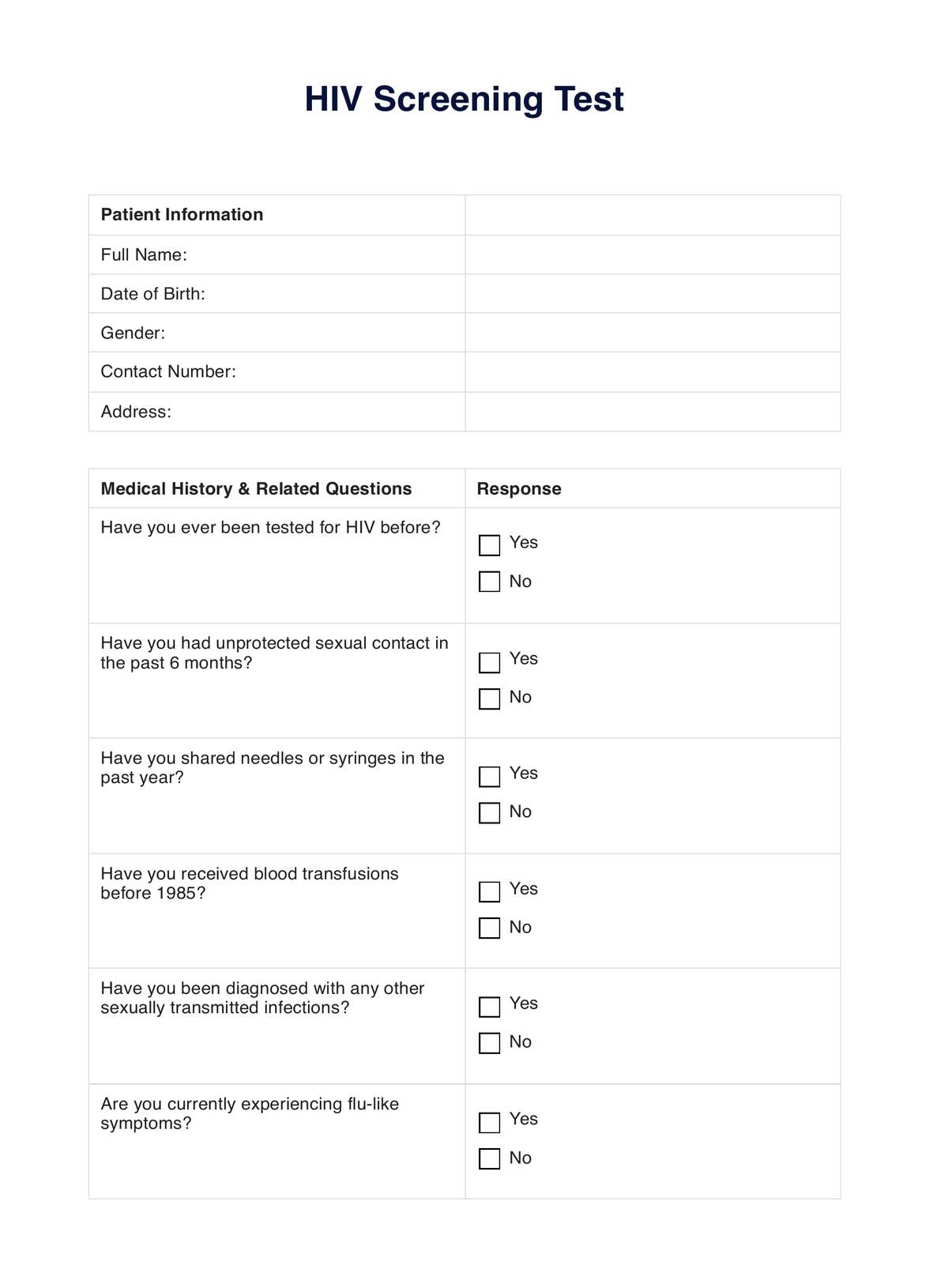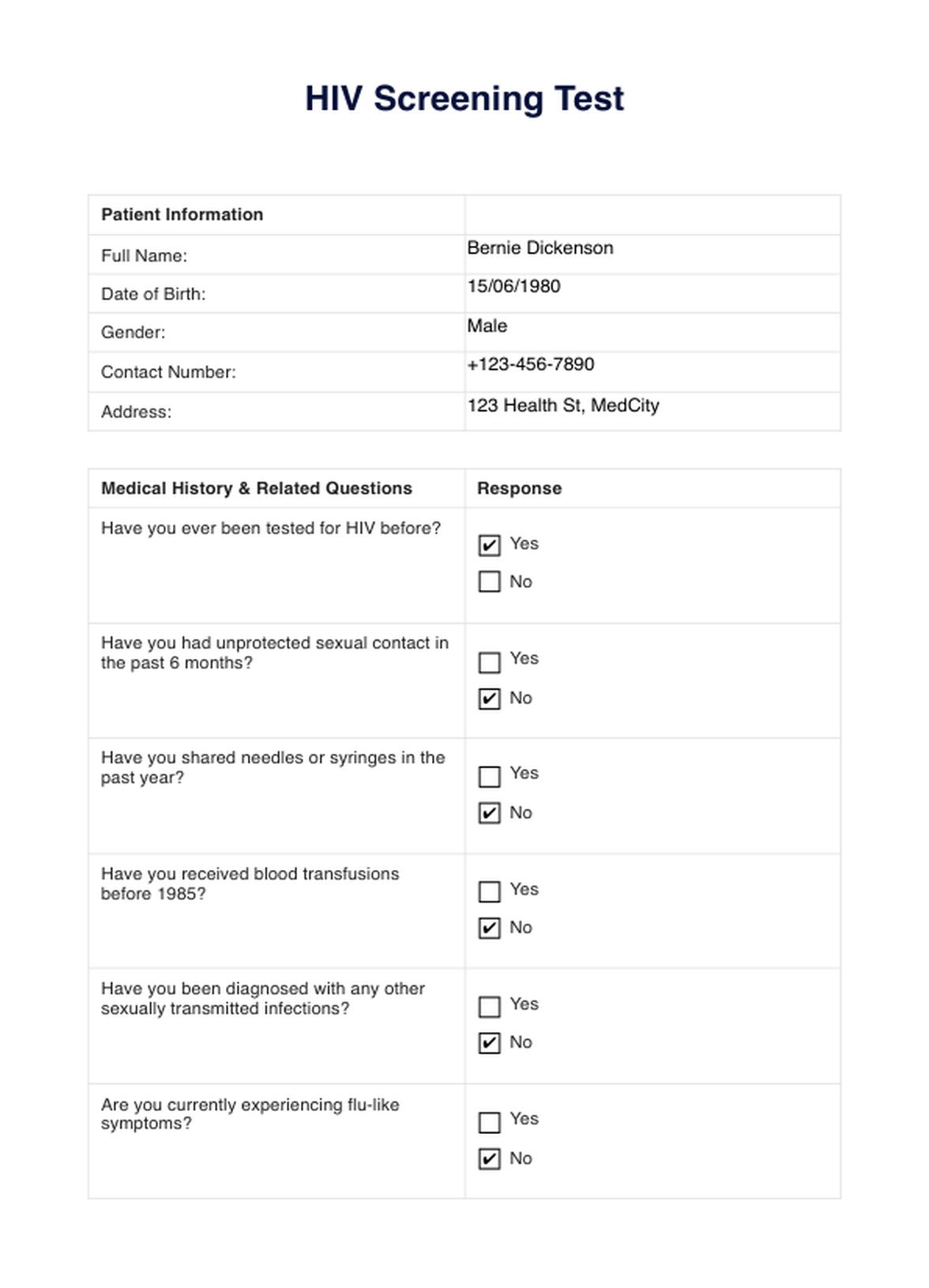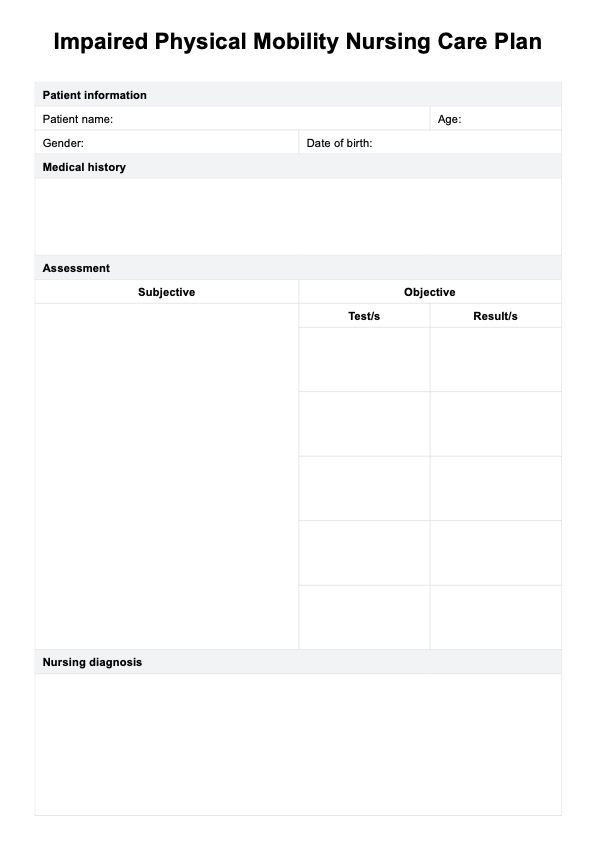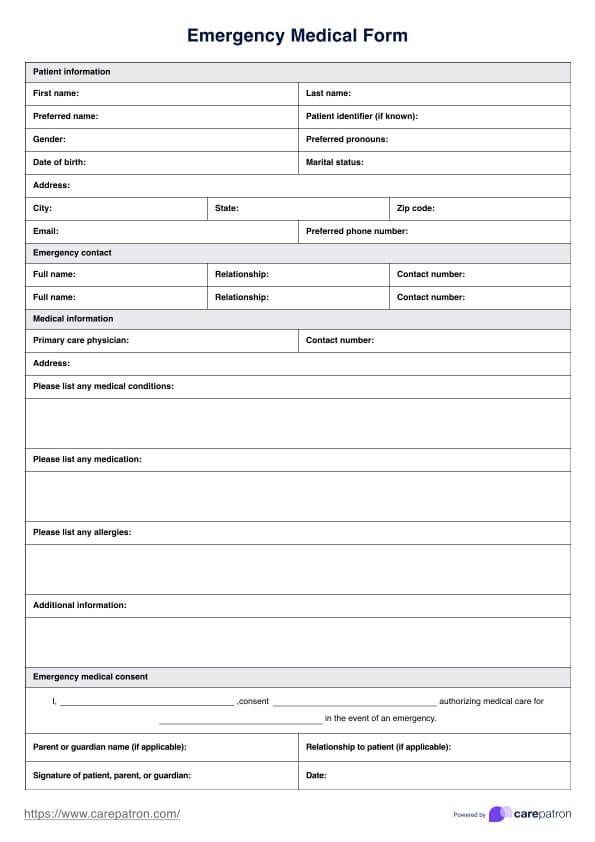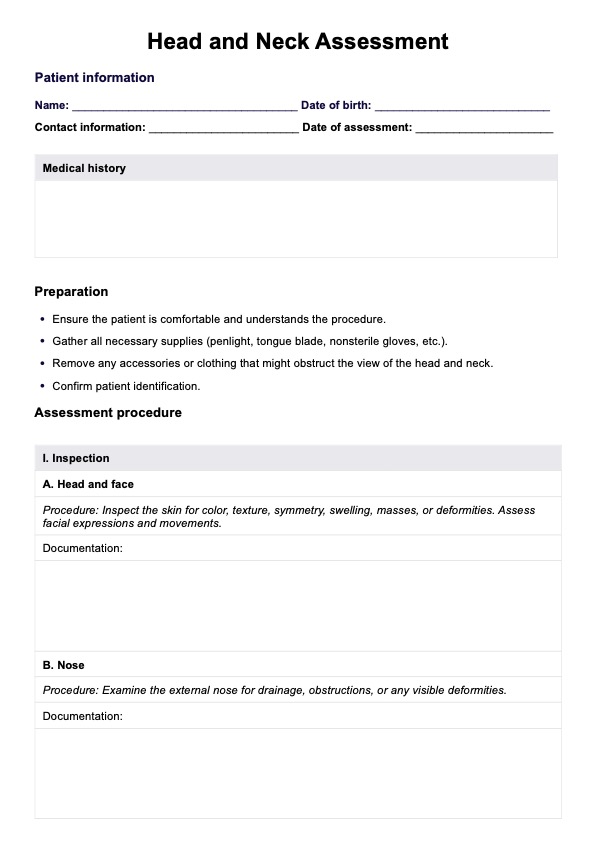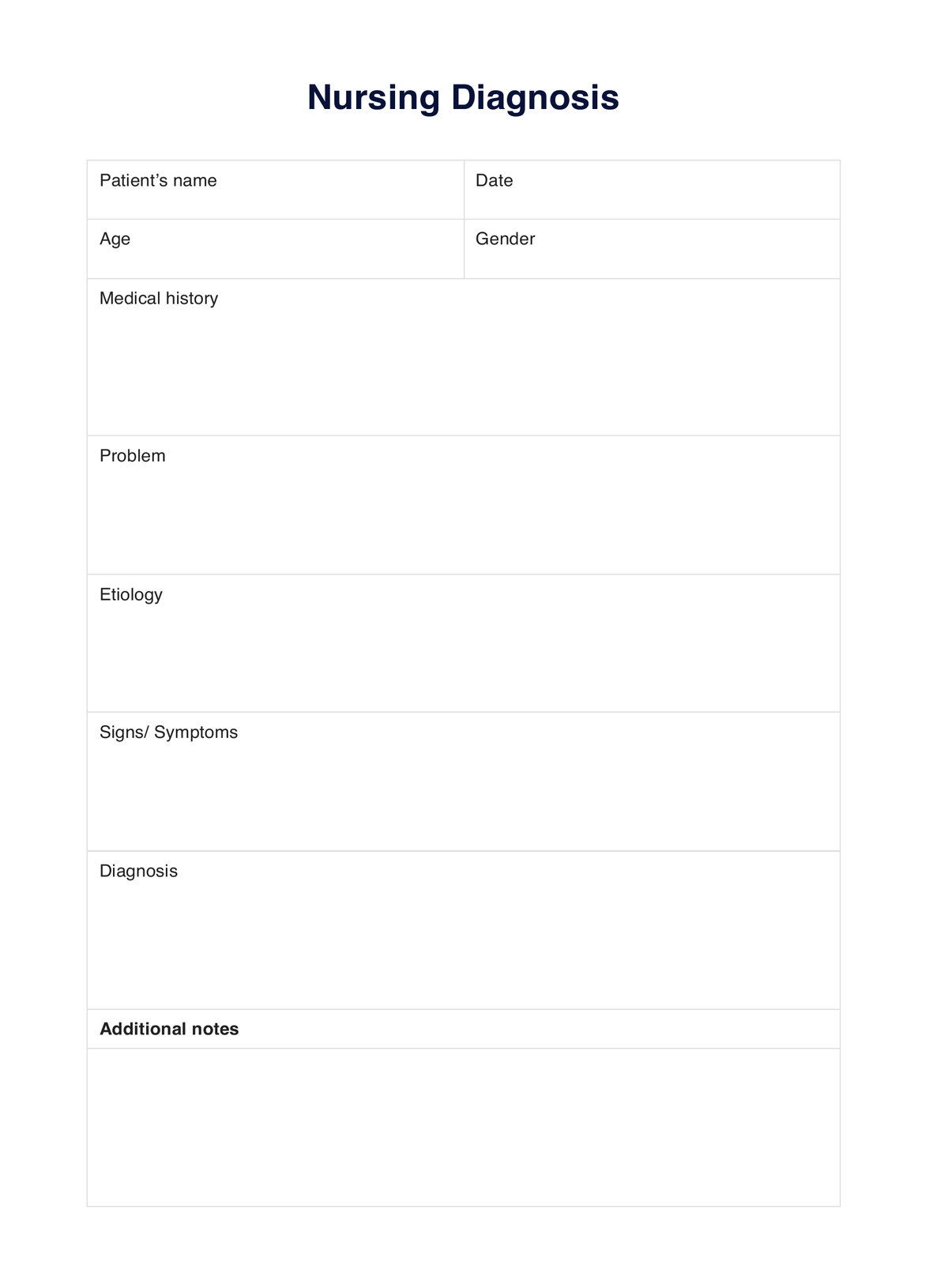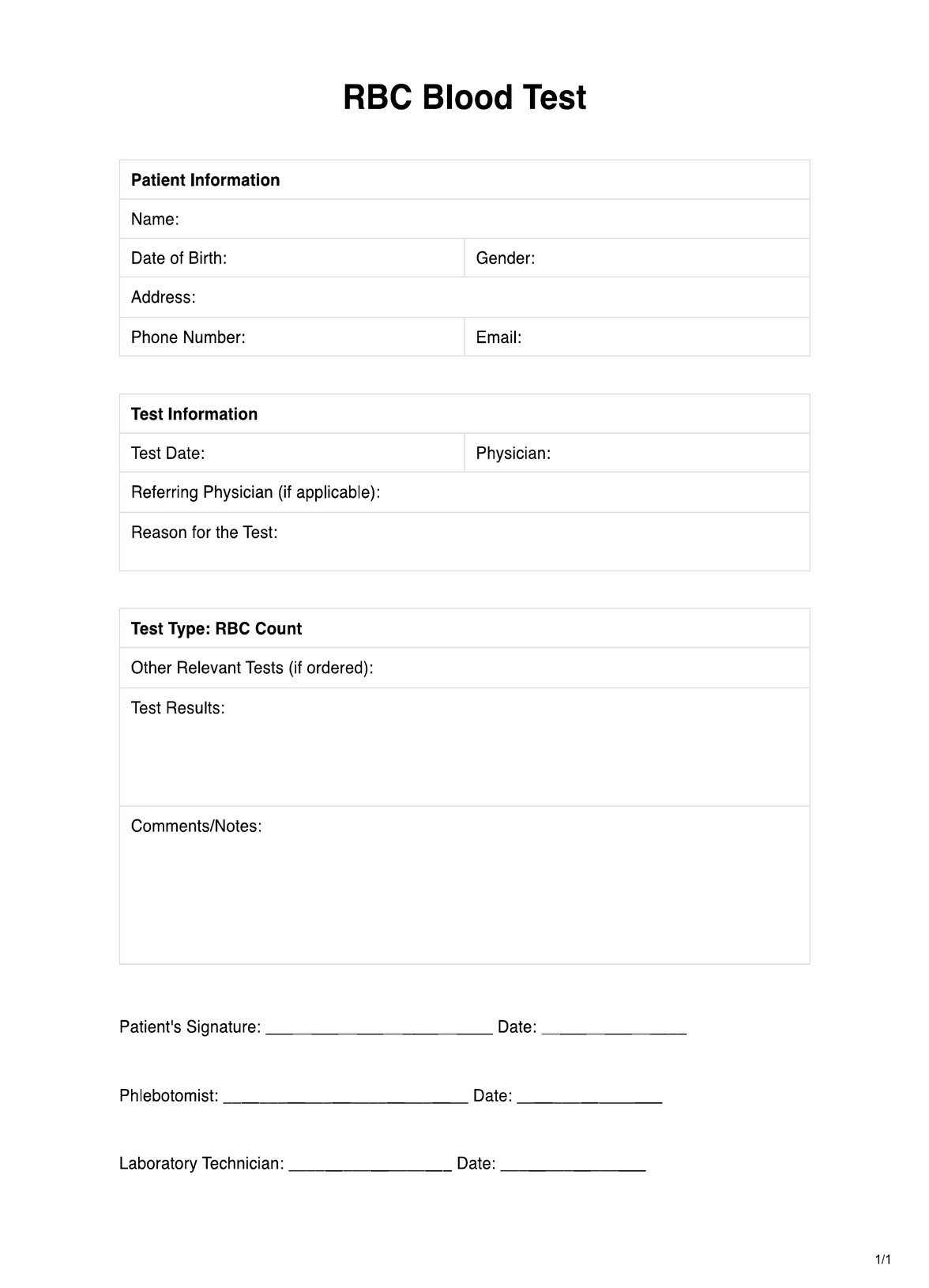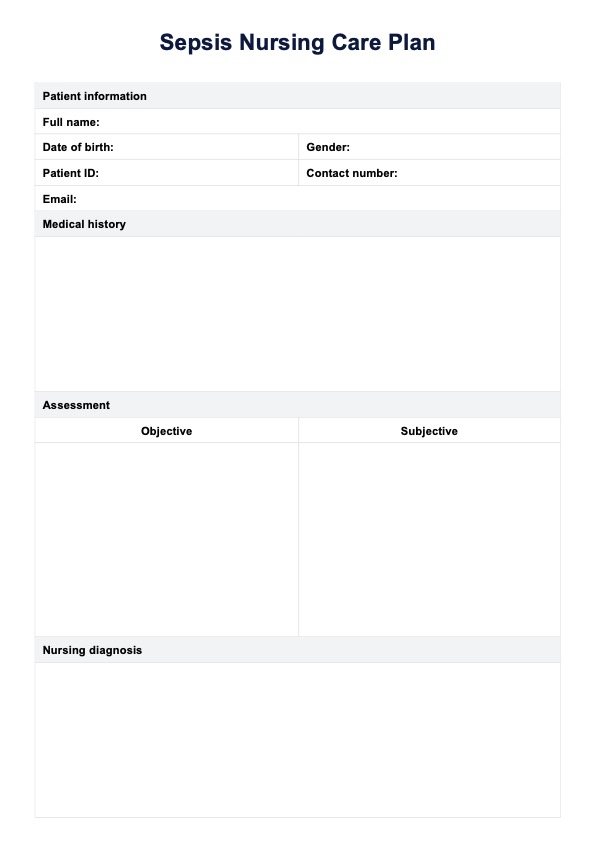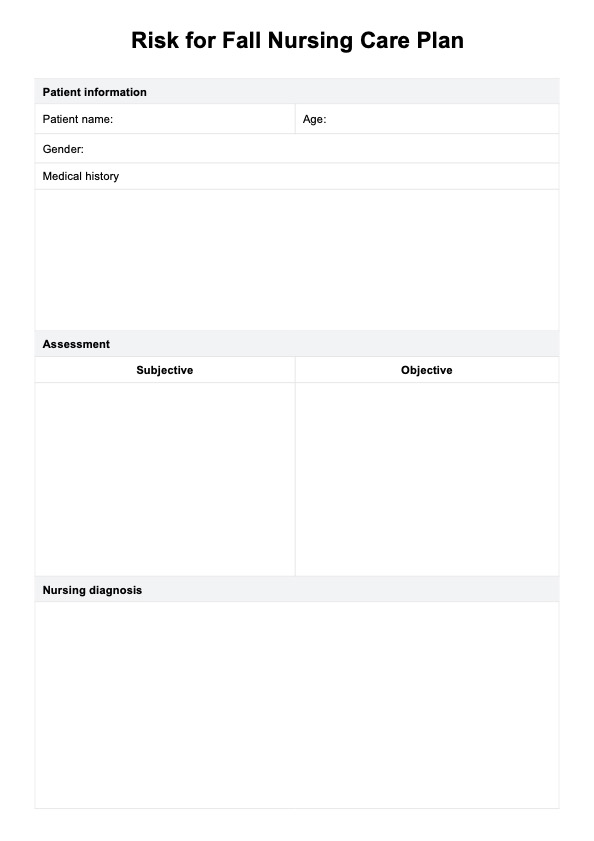HIV Screening
Discover the comprehensive guide to HIV Screening with Carepatron. Streamline the process, ensure accuracy, and prioritize patient care. Download the free PDF now!


What is an HIV Screening Test?
In healthcare, few tests carry as much weight and significance as the HIV screening test. It's not just a test; it's a beacon of hope, a tool for prevention, and a testament to the advancements in medical science.
The HIV screening test is a pivotal diagnostic tool used to detect the presence of human immunodeficiency virus (HIV) antibodies in the bloodstream. HIV is responsible for acquired immunodeficiency syndrome (AIDS), which weakens the immune system, leaving the body vulnerable to life-threatening infections and diseases.
Early detection is the cornerstone of managing HIV. By identifying the virus in its initial stages, individuals can access timely treatment, manage their health effectively, and reduce the risk of transmitting it to others. The test itself is straightforward, typically involving a simple blood draw. Within a short span, results can unveil a clear picture of one's HIV status.
For healthcare professionals, understanding the nuances of the HIV screening test is paramount. It's not just about administering a test; it's about providing hope, guidance, and support to those awaiting their results. In a world where early detection can mean the difference between life and prolonged health, the HIV screening test stands as a beacon of proactive healthcare.
In this guide, we'll delve deeper into the intricacies of the HIV screening test, offering insights, examples, and a downloadable PDF to aid healthcare professionals in their noble endeavors.
HIV Screening Template
HIV Screening Example
How to use the HIV Screening Test
The HIV Screening Test is essential for healthcare professionals to determine a patient's HIV status. It can provide accurate results and guide further medical interventions when used correctly. Here's a step-by-step guide on how to administer this test:
1. Gather Patient Information
Begin by collecting the patient's basic details, such as name, date of birth, gender, contact number, and address. This information is crucial for record-keeping and future reference.
2. Discuss Medical History
Engage the patient in a conversation about their medical history. This includes prior HIV tests, sexual activity, needle sharing, blood transfusions, and other STIs. The patient's responses provide context for the test results.
3. Choose the Right Test
Depending on the patient's exposure risk and the time since potential exposure, select the appropriate HIV test. The Antigen/Antibody Test is commonly used due to its high sensitivity and specificity.
4. Collect Blood Sample
Draw a blood sample from the patient. Ensure the sample is labeled correctly and stored under the right conditions to prevent degradation.
5. Interpret the Results
Once the results are available, compare the value against the normal range. A value within the normal range typically indicates a negative result, while values outside this range may suggest a positive or indeterminate result.
6. Provide Post-Test Counseling
Discuss the results with the patient. If the result is positive, guide them on the next steps, including confirmatory tests and potential treatments. If negative, advise on preventive measures to maintain their HIV-negative status.
In conclusion, the HIV Screening Test is a powerful tool in the fight against HIV/AIDS. It can provide the patient and healthcare professional clarity and direction when administered correctly. Regular training and updates on HIV testing protocols are essential to ensure that healthcare professionals remain equipped to offer the best care possible.
When Would you use This Test?
The HIV Screening Test is a pivotal tool in the healthcare arsenal, designed to detect the presence of HIV antibodies in a patient's blood. But when is the right time to administer this test? Let's delve into the scenarios where this test becomes indispensable:
- Initial Patient Assessment: Whenever a patient presents with symptoms suggestive of an HIV infection, such as unexplained weight loss, prolonged fever, or night sweats, an HIV Screening Test is warranted.
- Routine Health Check-ups: For sexually active adults, especially those with multiple partners or those who engage in unprotected sex, regular HIV screening is recommended as a part of routine health check-ups.
- Pregnancy: It's crucial for expecting mothers to undergo an HIV test. Early detection can lead to interventions significantly reducing the risk of mother-to-child transmission during childbirth or breastfeeding.
- Post-Exposure: If someone believes they've been exposed to the virus, either through sexual contact, sharing needles, or an occupational hazard (like a needlestick injury to a healthcare worker), immediate testing is advised.
- Blood Donation: Before donating blood, an HIV test is mandatory to ensure the safety of blood transfusion recipients.
- Before Surgery: In some healthcare settings, patients may be screened for HIV before undergoing major surgeries to ensure the safety of the medical staff and to make informed decisions about the patient's care.
Understanding when to use the HIV Screening Test is paramount for healthcare professionals. It not only aids in early detection and treatment of the disease but also plays a pivotal role in preventing its spread. By integrating this test into appropriate scenarios, healthcare professionals can ensure timely interventions, better patient outcomes, and a safer community.
What do the Results Mean?
Interpreting the results of an HIV Screening Test is crucial for both the healthcare professional and the patient. The outcome can profoundly affect an individual's health, lifestyle, and future medical care. Let's break down the expected results and their implications:
- Negative Result: A negative result indicates no HIV antibodies were detected in the blood sample during testing. However, it's essential to note that there's a "window period" after HIV infection during which the body hasn't produced enough antibodies for the test to detect. A follow-up test might be recommended after a few weeks if a potential exposure occurred recently.
- Positive Result: A positive result suggests the presence of HIV antibodies, indicating an HIV infection. It's crucial to understand that a positive result from an initial screening test always requires a confirmatory test to ensure the accuracy of the diagnosis.
- Indeterminate or Inconclusive Result: Sometimes, the test must provide a clear positive or negative result. This could be due to various reasons, including a recent infection, vaccination, or other underlying conditions. In such cases, retesting and additional diagnostic tests are advised.
Understanding the results of an HIV Screening Test is the first step in a journey that might require medical intervention, lifestyle changes, and emotional support. Regardless of the outcome, it's essential to approach the results with empathy, clarity, and a commitment to the next steps. Whether starting treatment, adopting preventive measures, or continuing regular screenings, understanding the test's results ensures that the patient and healthcare professional are equipped to make informed decisions.
Research & Evidence
Fourth-generation HIV tests, combined antigen/antibody tests, have significantly advanced HIV diagnostics. These tests are designed to detect both the HIV-1 p24 antigen and antibodies to HIV-1 and HIV-2, allowing for earlier and more accurate virus detection than previous generations of tests.
The history of these tests dates back over a decade, with the primary aim being to reduce the diagnostic window period - the time between potential exposure to HIV and when a test can reliably detect it. By targeting the p24 antigen, which appears before antibodies develop, these tests can identify infections in individuals before they become highly infectious to others. This early detection is crucial in preventing the spread of the virus.
Numerous studies have evaluated the effectiveness and reliability of fourth-generation tests. One such study, published in the Journal of Clinical Microbiology, found that these tests could detect HIV infection 1-2 weeks earlier than third-generation antibody-only tests. Another study in the Archives of Internal Medicine highlighted the test's ability to detect acute HIV infections, which are often missed by other testing methods.
In addition to their diagnostic capabilities, fourth-generation tests play a vital role in HIV prevention strategies. Early detection allows for prompt initiation of antiretroviral therapy, which benefits the individual's health and reduces the risk of transmitting the virus to others.
In conclusion, the development and implementation of fourth-generation HIV tests have been backed by a solid foundation of research and evidence. Their ability to detect HIV earlier than previous tests has made them an invaluable tool in the fight against HIV/AIDS.
References
- Lacroix A, Feelders RA, Stratakis CA, & Nieman LK. (2015). Cushing's syndrome. Lancet, pp. 386, 913–927. Link
- Ilias I, Torpy DJ, Pacak K, Mullen N, Wesley RA, & Nieman LK. (2005). Cushing's syndrome due to ectopic corticotropin secretion: twenty year's experience at the National Institutes of Health. Journal of Clinical Endocrinology and Metabolism, 90, 4955–4962. Link
- Isidori AM, Kaltsas GA, Pozza C, et al. (2006). The ectopic adrenocorticotropin clinical features, diagnosis, management, and long-term follow up. Journal of Clinical Endocrinology and Metabolism, 91, 3325–3333. Link
Commonly asked questions
Carepatron is designed with healthcare professionals in mind, ensuring a user-friendly interface, top-notch security, and features that streamline the entire screening process.
Patient confidentiality is our top priority. Carepatron employs advanced encryption and security measures to keep all patient data confidential.
Absolutely! Carepatron is cloud-based, allowing healthcare professionals to access patient records and screening results from any device, anytime, anywhere.


